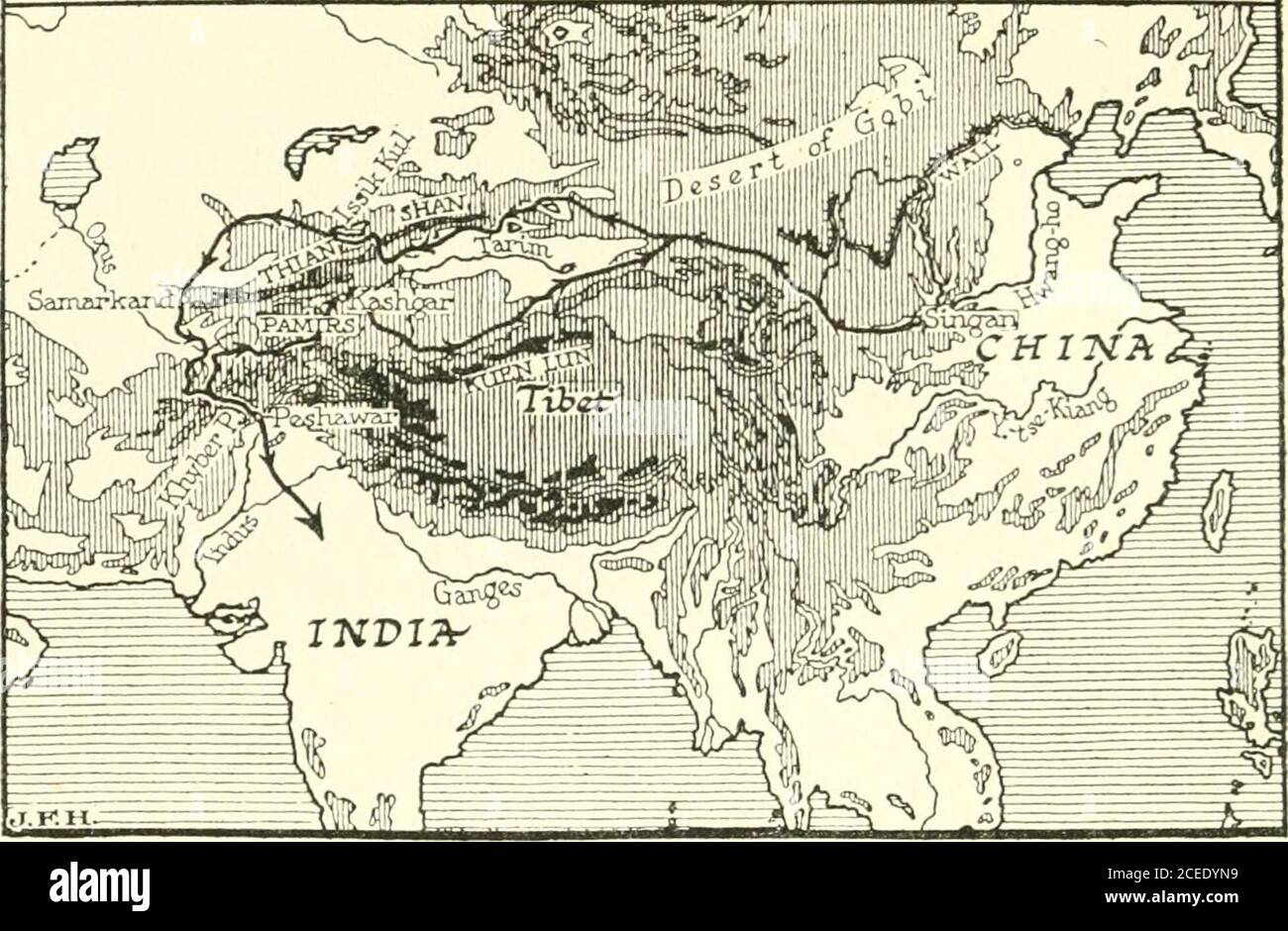. The outline of history : being a plain history of life and mankind. he south, Confucianism thepractice of the north. Both stood for adjustment ;but the adjustincjit of Confucius was the adjust-ment of the individual in his social and ceremonialrelations to others, while that of Lao-tse was theadjustment of the individual soul in its relation tothe Infinite. The history of China is bound up withthe struggle of those two forces, culminating inthe practically complete defeat of Taoism aftercenturies of ebb and flow. Chu Hsi, a.d. 1130-1200,was the later St. Paul of modern Confucianism.During th

Image details
Contributor:
Reading Room 2020 / Alamy Stock PhotoImage ID:
2CEDYN9File size:
7.1 MB (450.7 KB Compressed download)Releases:
Model - no | Property - noDo I need a release?Dimensions:
1954 x 1278 px | 33.1 x 21.6 cm | 13 x 8.5 inches | 150dpiMore information:
This image is a public domain image, which means either that copyright has expired in the image or the copyright holder has waived their copyright. Alamy charges you a fee for access to the high resolution copy of the image.
This image could have imperfections as it’s either historical or reportage.
. The outline of history : being a plain history of life and mankind. he south, Confucianism thepractice of the north. Both stood for adjustment ;but the adjustincjit of Confucius was the adjust-ment of the individual in his social and ceremonialrelations to others, while that of Lao-tse was theadjustment of the individual soul in its relation tothe Infinite. The history of China is bound up withthe struggle of those two forces, culminating inthe practically complete defeat of Taoism aftercenturies of ebb and flow. Chu Hsi, a.d. 1130-1200, was the later St. Paul of modern Confucianism.During the Tang, Sung, and Ming dynasties Chinawas temporarily united, and free play was allowedto the thought of both schools. Each j^layed itsjjart and each reacted upon the other, to the greatbenefit of the Empire. Yet both systems carriedwithin them the seeds of decay. Taoism, divorcedfrom the affairs of everyday life and the educationof the people, lost itself in art, literature, and 316 THE OUTLINE OF HISTORY YUAN CHW?lN[G-5 ratdbz G-orw ChixuL -to IndhL. 629-645^.1).. iT.WH § 91 In the year 629, the year after the arrivalof Muhammads envoys at Canton and thirty mythology. Confucianism added layer after layerof hard shell about the inert organism of sociallife. The end was finally reached in 1421 under theMings with the transference of the capital fromNanking to Peking, and the dominance of theConfucian party who had brought it about. Onlyin the later Ming period does the great solitaryfigure of Wang Yang Ming arise. His centraldoctrine that thought and learning are of smallvalue unless translated into action had littleimmediate effect in China, but it fell upon Japanesesoil, quickened the drooping Samurai spirit, andreached maturity with the Russo-Japanese warand the advance of modern Japan. The imprisonment of the Chinese mind in theancient script is merely one aspect of Confucianismin its bondage to the past. The statement ofJ. L. M. and E. B. that China is a nation of peasant